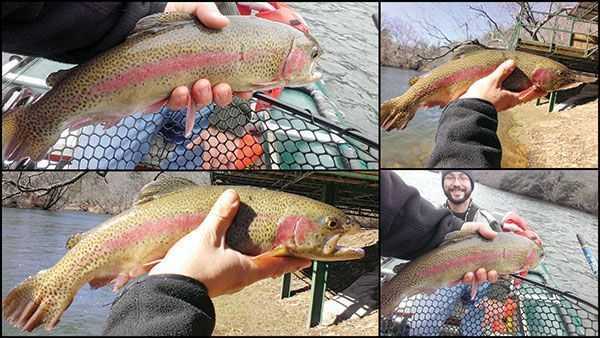Ever wonder what happened to that trout you caught and released during a previous trip to the river? The answer to that question ranges from the perfect world where the trout is safely swimming again in the waters where you caught it, to the fish being clutched in an otter’s jaws or hanging on a wall or swimming in hot grease.
For the most part, catch-and-release anglers like to romanticize the outcome of releasing trout. The dream is often that because the fish darted away upon release, it is continuing life as if nothing had ever happened. I bet the fish would tell a different tale.
The bottom line is, some trout won’t make it after being caught. Even with the angler employing impeccable fish-handling techniques, perfect anatomical hook placement and quick release following the shortest fight possible, some fish die. Period.
I’ve been lucky during the last several years while fishing the Toccoa River tailwater. I say this considering I’ve been able to catch and release a few of the same fish, several times. Some of these fish began as 9-inch stockers, and I’ve caught it a time or two, watching as they grow into trophies.
I’ve been asked by more than one person why I take so many photos of fish, even of the stockers and other not-so-big trout.
First, obsessive fish photography fits as a part of my job description as an outdoor journalist. Don’t let anyone convince you to pass up photographing a smaller trout, as they are often holding much more brilliant colors and markings.
More importantly, I like to take pictures of individual fish over time, allowing for the unique experience of watching a fish grow and change. As an angler, this will teach unbelievable things about a fish’s habits and feeding behaviors.
I usually take photos of trout before they’re unhooked to be sure I get one. But, because the time, date and other information of digital media automatically attach to image files, my photos also serve as a fishing log and hatch chart, which is just as useful as any written version.
While these are great benefits of taking a lot of fish photos, the greatest experience is having the ability to look at photos of trout I’ve previously caught and released. I can compare photos to the current catch and know, without a doubt, if it’s the same fish. It feels good to think you were successful in seeing that the fish made it to fight another day, it is truly an honor to know it for a fact.
Catching the same fish multiple times can help you learn things about how trout in a given stretch of water react to fishing pressure and stress. For instance, did the fish move from the location you first caught it in? How was the fish hooked and with what type of hook, fly or lure? What general condition was the fish in the last time you caught it versus its current condition?
While all the information you’ll likely gather is anecdotal and unscientific, the experience of catching and releasing a nice trout is not about the angler as much as it is about other anglers.
Legendary fly-fisherman and fly-tier Lee Wulf said it best, “The finest gift you can give to any fisherman is to put a good fish back, and who knows if the fish that you caught isn’t someone else’s gift to you?”
Above using the safest tactics and gear to ensure a successful catch-and-release experience, one factor alone has more impact on whether or not you’re likely to catch and release the exact same fish. That is time put in on the river. Thankfully, I’m able to log at least a couple hours a day, if not all day, on about 300 days in any year. This results in a higher rate of second-time catches of the same fish. It’s simply as a matter of statistics. Some fish I’ve even managed to catch-and-release three or four times.
I never realized I was catching the exact same fish more than once until I began comparing photographs of fish caught in the same area. What you can learn from these fish will help you at times, confuse you at others. However, the knowledge that you’ve been given a second or third chance to enjoy catching that fish, or seeing one of my boys or clients have the chance to catch a good fish I put back at some prior point is truly rewarding.
Giving back to the river, fellow anglers and the fish is what it’s all about. Be sure you do your part. Taxidermy and food rarely inspire emotion. A living, breathing trout swimming in rushing cold water brings any number of emotions, from joy to obsession.
[easy-social-share]
